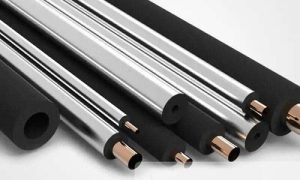Elastomer insulation consists of materials known as closed cells. These materials can be based on polyvinyl chloride (Nitrile Butadiene Rubber) or NBR and (Ethylene Propylene Diene Monomer Rubber) or EPDM.
There have always been differences between the characteristics and benefits of NBR insulation and EPDM insulation among those who specialize in this field. But in general, these two types of insulation are very similar and have only very small differences.
What is the difference between NBR and EPDM insulation?
If we want to compare these two insulations in terms of efficiency in general, it should be said that in certain cases, the efficiency of EPDM elastomeric insulation may be better than NBR insulation.
But the problem is that it is very difficult to produce this insulation. In such a way that even very big and famous insulation manufacturers cannot make 100% EPDM elastomeric insulation, because it is not economical for them at all.
One of the important advantages of elastomeric insulation is that although it breaks when the temperature rises, it regains its elasticity after it is lowered.
In general, we can compare these two types of insulation in 6 cases, which are:
1 – Gender:
NBR insulation consists of three materials:
Nitrile
butadiene
rubber
EPDM elastomeric insulation consists of four materials
ethylene
propene
diene
They are called methylene.
2- Working temperature range:
One of the differences between these two insulations is their working temperature range, NBR insulation can be used in the temperature range of -10 to +120 degrees Celsius.
While the temperature range in which EPDM elastomeric insulation can be used is from -30 to +150 degrees Celsius.
3- Resistance to sunlight:
Another difference between NBR and EPDM is their resistance to sunlight. Although EPDM elastomeric insulation shows more resistance than NBR,
But again, using both insulations without a protective coating is not cost-effective because after some time both insulations will be destroyed due to direct sunlight.
4- Resistance to oil and grease:
It is interesting to know that the resistance of NBR insulation against substances such as oil, grease and other chemicals is higher than EPDM elastomeric insulation.
5- thermal conductivity coefficient:
Although the coefficient of thermal conductivity is very low in both types of insulation, this coefficient is lower in NBR insulation than EPDM elastomeric insulation because it has a lower density.
6- Resistance to water vapor penetration:
NBR insulation technology has been used for more than 50 years and its typical size in actual µ values is around 0999. In EPDM elastomeric insulation with a non-polar structure, this value is in most cases less than 9999. For this reason, insulation manufacturers who make EPDM elastomeric insulation use other polymers to achieve better values, which lowers UV and temperature resistance in this type of insulation.
What is elastomeric insulation glue?
One of the requirements for installing elastomeric insulation is its special adhesive. This glue has high heat and moisture resistance and is used to glue elastomeric insulation at desired levels.
This adhesive consists of a uniform viscous liquid and the color of this adhesive is black and it is used for all types of elastomeric pipe insulation, elastomeric roll insulation, elastomeric sheet insulation, elastomeric plate insulation, etc.
